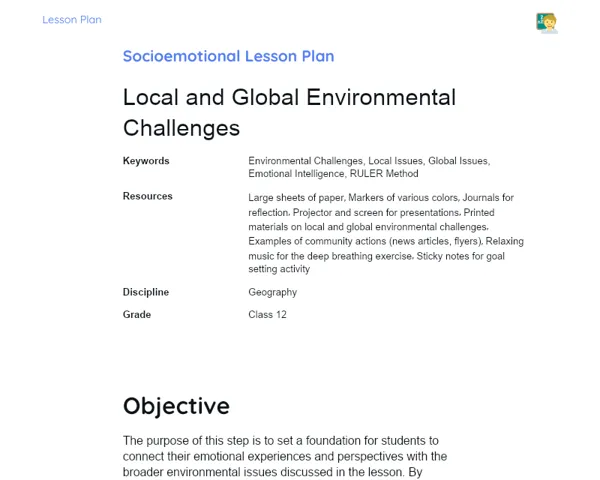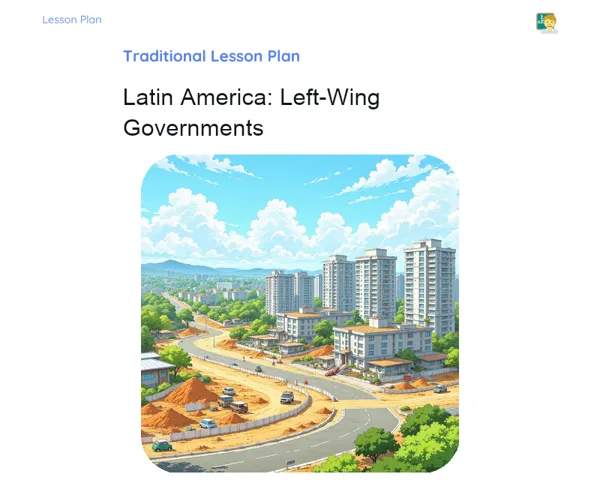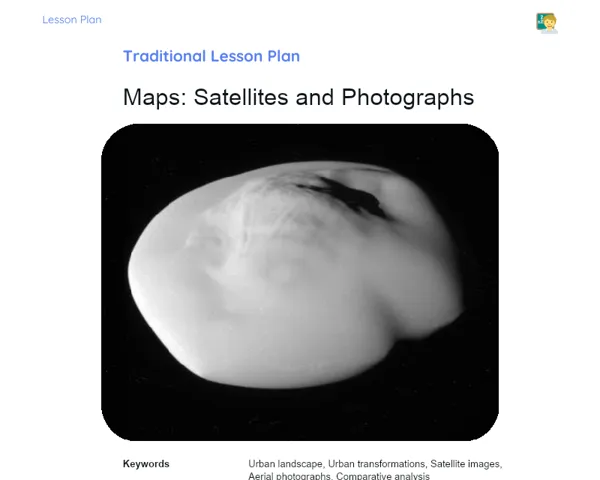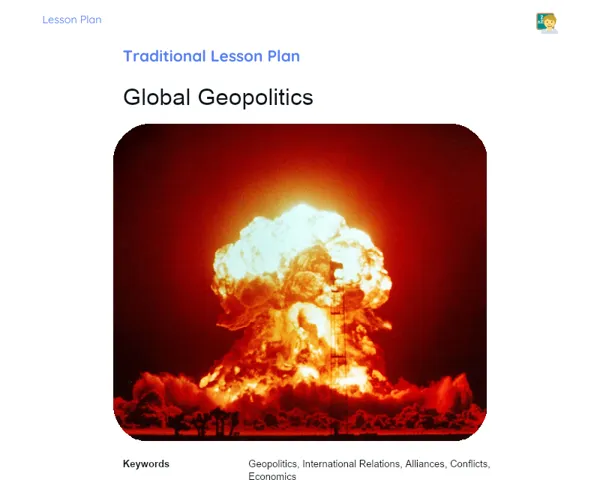Lesson Plan | Active Methodology | Rural and Urban Relationship
| Keywords | Rural-Urban Interdependence, Food Production and Consumption, Exchange Market, Travel Journal, Sustainable City, Practical Activities, Urban Planning, Sustainability, Geographical Education, Critical Thinking |
| Necessary Materials | Representative cards of resources from rural and urban areas, Paper, Colored pens, Old magazines for clippings, Poster board, Glue, Recyclable materials |
Premises: This Active Lesson Plan assumes: a 100-minute class duration, prior student study both with the Book and the beginning of Project development, and that only one activity (among the three suggested) will be chosen to be carried out during the class, as each activity is designed to take up a large part of the available time.
Objective
Duration: (5 minutes)
This objectives section is vital for setting clear learning goals for the class. By outlining these objectives, students can grasp what’s expected from them, allowing the teacher to navigate the lesson more effectively. It ensures that everyone is on the same page regarding the topics to be covered and the outcomes anticipated at the conclusion of the session.
Objective Utama:
1. Recognize and explain the connection between rural and urban areas, with a focus on food production in villages and consumption in cities.
2. Identify the key features of rural and urban regions, emphasizing their functions and significance for our society.
Introduction
Duration: (20 - 25 minutes)
The introduction is key to engaging students and linking their prior knowledge with the lesson's topic. The problem scenarios prompt students to critically consider the dependency between rural and urban areas. Contextualizing the topic in relatable terms piques students' interests and illustrates the practical importance of studying Geography.
Problem-Based Situation
1. Picture a city supermarket that suddenly stops receiving essential products like milk, eggs, and vegetables. What impact would this have on city dwellers and rural producers?
2. Imagine if all the routes connecting rural areas to the city were suddenly blocked. How would this disruption affect daily life for people in both the cities and the countryside?
Contextualization
To appreciate the relationship between rural and urban areas, let's reflect on our everyday food: rice, lentils, and fruits. All of these are cultivated in rural regions and transported to cities, where we purchase and enjoy them. Furthermore, many daily essentials like clothing and furniture originate from rural sources. This interconnectedness exemplifies how much cities rely on rural areas and vice versa.
Development
Duration: (75 - 85 minutes)
The Development phase is designed to allow students to apply the knowledge they've gained about the interdependence of rural and urban areas in a hands-on way. Working in groups for problem-solving and creative activities enhances their collaboration skills, critical thinking, and real-world insight into the subject matter. These activities are crafted to be engaging and educational, deepening their understanding of the concepts discussed.
Activity Suggestions
It is recommended that only one of the suggested activities be carried out
Activity 1 - Market Exchange between Rural and City
> Duration: (60 - 70 minutes)
- Objective: Grasp the significance of cooperation and exchange between rural and urban areas for shared well-being.
- Description: In this activity, the classroom transforms into a bustling market, with half of the students playing the role of farmers and the other half representing urban residents. Each group will have specific goods to negotiate and trade, where farmers bring their agricultural produce and city dwellers offer urban products and services. The objective is to conduct trades that benefit both parties, underscoring the interdependence between rural and urban areas.
- Instructions:
-
Split the class into two groups: Rural and Urban.
-
Distribute cards indicating resources from rural and urban areas to each group.
-
Clarify that the aim of the exchanges is to benefit both groups.
-
Give them time to negotiate with each other.
-
Wrap up with a discussion on the exchanges made and insights gained about mutual dependency.
Activity 2 - Travel Journal: Where Does Our Food Come From?
> Duration: (60 - 70 minutes)
- Objective: Visualize and comprehend the various stages involved in food production and distribution.
- Description: Students will be grouped, and each group will focus on a specific food item to explore its journey from the rural areas to the cities. They will create an illustrated 'Travel Journal' that narrates the food's path, detailing the cultivation, harvesting, transportation, and sale processes. This activity aims to illustrate the journey food takes before it arrives on our plates.
- Instructions:
-
Divide students into groups and assign each group a different food item.
-
Provide materials like paper, colored pens, and old magazines for cut-outs.
-
Instruct each group to research and depict the journey of their food item from the rural area to the city.
-
Each group presents their Travel Journal to the class, explaining each step in the food's journey.
-
Discuss the importance of each stage in ensuring food reaches our homes.
Activity 3 - Building a Sustainable City
> Duration: (60 - 70 minutes)
- Objective: Foster an understanding of sustainable urban planning and its connection to rural areas.
- Description: In this exercise, students are challenged to design a city model that prioritizes sustainable integration with the surrounding rural areas. They need to consider factors such as transportation, food consumption, and natural resources. The plans should be illustrated on a large poster, with model structures made from recyclable materials.
- Instructions:
-
Discuss the concepts of sustainability and rural-urban integration.
-
Divide students into groups and provide them with materials like poster boards, glue, and recyclable items.
-
Task each group to draw and construct a city model on the poster, considering how to integrate rural elements.
-
Each group should present their project, explaining how each aspect contributes to sustainability.
-
Engage in a debate on best practices for integration and sustainability observed in the projects.
Feedback
Duration: (15 - 20 minutes)
Through group discussions, this feedback section aims to solidify students' learning, allowing them to articulate and reflect on the insights and experiences gained through the activities. The discussion reinforces understanding while developing communication and critical reasoning skills, fundamental for a comprehensive grasp of the theme of interdependence between rural and urban areas.
Group Discussion
At the conclusion of the activities, facilitate a group discussion where students can share their experiences and conclusions. Begin by summarizing the concepts of rural and urban interdependence. Encourage students to reflect on how each activity illustrated these relationships and identify what they found most insightful or unexpected. Motivate them to consider how the activities may translate into real-world applications, fostering critical thinking and practical application of knowledge.
Key Questions
1. What were the main takeaways regarding the interdependence between rural and urban areas during the activities?
2. How did the trades in the 'Market Exchange between Rural and City' highlight the necessity of cooperation?
3. In what ways could the 'Sustainable City' project be implemented in reality to enhance the connection between rural and urban areas?
Conclusion
Duration: (5 - 10 minutes)
The conclusion aims to facilitate students in consolidating and reflecting on the knowledge acquired, linking it to their everyday experiences and reinforcing the importance of understanding the interdependence between rural and urban areas. This stage helps solidify their learning, fostering an awareness of the practical applications of concepts in real contexts and illuminating the complexities of the geographic relationships that shape our world.
Summary
In conclusion, the teacher should summarize the key content covered, emphasizing the interdependence of rural and urban areas, particularly in terms of food production and consumption. It's crucial to highlight how agricultural products are integral to urban life and how cities provide essential services and goods back to rural areas.
Theory Connection
Throughout the lesson, theory was woven together with practice through engaging activities like the 'Market Exchange between Rural and City,' demonstrating the exchange of resources between rural and urban zones in a hands-on manner. Furthermore, the 'Travel Journal: Where Does Our Food Come From?' and 'Building a Sustainable City' activities allowed students to visualize and apply geographic concepts in real-life scenarios, reflecting genuine challenges and prospective solutions.
Closing
Lastly, it's important to stress the relevance of understanding the relationship between rural and urban areas in our everyday lives. Grasping this dynamic helps us to appreciate the systems sustaining our daily routines and encourages a more critical and mindful view of sustainability and the economic and environmental interdependence we share.



